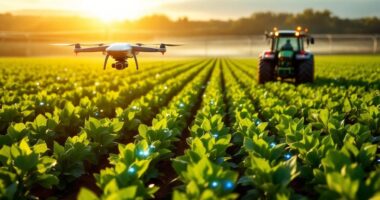Bioplastics are innovative materials made from renewable biomass sources like corn starch and algae, offering alternatives to petroleum-based plastics. They come in various types: bio-based, biodegradable, compostable, and drop-in varieties. Environmental benefits include reduced fossil fuel dependency and support for circular economy principles. However, challenges persist—higher costs, variable performance, inadequate disposal infrastructure, and potential competition with food crops. The expanding research and growing market demand signal promising developments in this sustainable materials frontier.

The humble plastic bag—once a symbol of modern convenience—now finds itself at the center of an environmental reckoning. Enter bioplastics, the more earth-friendly cousins in the polymer family tree. These innovative materials are derived from renewable biomass sources like corn starch, sugarcane, and even algae, offering a promising alternative to their petroleum-based relatives.
Bioplastics come in several varieties, each with its own personality traits. Bio-based plastics flaunt their renewable resource origins, while biodegradable types are the decomposition experts. Compostable plastics are the picky ones—they’ll break down, but only under specific conditions. Then there are drop-in bioplastics, the chemical doppelgängers of conventional plastics that sneak into existing recycling streams without causing a fuss.
Production methods for these green polymers vary widely. Some are processed directly from natural biopolymers (nature’s ready-made plastics, if you will), while others emerge from chemical synthesis or fermentation—essentially harnessing microscopic organisms as tiny plastic factories. It’s like having bacteria as your manufacturing staff, minus the HR complications.
The environmental perks are substantial. Bioplastics reduce our fossil fuel dependency, potentially achieving carbon neutrality—imagine plastics that don’t add to Earth’s greenhouse gas burden! They can divert waste from landfills and utilize renewable resources in a closed-loop system that would make any sustainability engineer swoon. These materials exemplify the continuous reuse principle at the heart of modern circular economy thinking.
From food packaging to medical implants, bioplastics are infiltrating various applications. Your takeout container, hospital IV bag, and even some car parts might already be bioplastic converts. Despite representing only 1-2% of total plastics, bioplastics are gaining momentum in various industries as awareness of environmental impacts grows.
However, these materials aren’t without growing pains. They typically cost more than conventional plastics and sometimes perform like an understudy rather than a star in certain applications. The infrastructure for proper disposal remains lacking, and some bioplastics compete with food crops for valuable farmland.
Despite these challenges, the future looks promising. With growing market demand, ongoing research into new feedstocks, and integration with circular economy principles, bioplastics aren’t just a passing trend—they’re positioning themselves as leading characters in our sustainability story. Companies like Full Cycle Bioplastics are pioneering innovative methods that convert organic waste into bioplastic, offering solutions that avoid using valuable agricultural land for plastic production.
Frequently Asked Questions
How Do Bioplastics Compare in Cost to Conventional Plastics?
Bioplastics currently cost 20-30% more than conventional plastics, with average prices ranging from $2-$7 per kilogram compared to $1.2-$1.5 for traditional options.
This price gap exists due to raw material costs, complex production processes, and limited economies of scale.
However, bioplastic prices have steadily decreased over the past decade and are projected to become more competitive as production volumes increase, technology advances, and oil prices potentially rise.
Can Bioplastics Be Recycled With Traditional Plastics?
Most bioplastics cannot be recycled with traditional plastics. When mixed together, bioplastics disrupt conventional recycling processes, fundamentally contaminating the stream.
The exception is bio-based drop-ins like bio-PET, which can join their fossil-based twins in recycling facilities.
The recycling infrastructure for bioplastics remains underdeveloped, creating a chicken-and-egg problem: with bioplastics representing only 1-2% of the market, there’s limited economic incentive to build dedicated recycling systems.
Will Bioplastics Completely Replace Petroleum-Based Plastics?
Complete replacement of petroleum-based plastics with bioplastics remains unlikely in the near future.
Despite growing at 20-30% annually, bioplastics face significant hurdles: higher production costs, performance limitations with moisture and gas barriers, and inadequate industrial composting infrastructure.
While companies like Ikea and Nestle are adopting bioplastics, the 1% market share highlights the long road ahead.
More realistic is a gradual shift in specific applications as technology improves and costs decrease.
How Long Does It Take for Bioplastics to Decompose?
Bioplastics decompose at varying rates depending on their composition and environment.
PLA takes 3-6 months in industrial composting but may never decompose in landfills.
PHA breaks down in 3-6 months in marine settings, while starch-based options need just 20 days to 9 weeks when properly composted.
Environmental conditions matter tremendously – temperature, moisture, and microbial activity all influence decomposition times.
Industrial facilities vastly outperform home composting setups for most bioplastics.
What Industries Are Currently Using Bioplastics Most Successfully?
The packaging industry leads bioplastic adoption, representing 45% of the market with 1.12 million tonnes used in 2024.
Agriculture follows with biodegradable mulch films that enhance soil fertility and reduce waste.
The automotive sector incorporates bioplastics in vehicles like Toyota’s Prius Alpha, while consumer goods companies like LEGO develop sustainable alternatives for traditional products.
Food and beverage giants Coca-Cola and PepsiCo have successfully implemented plant-based bottles in their packaging strategies.









